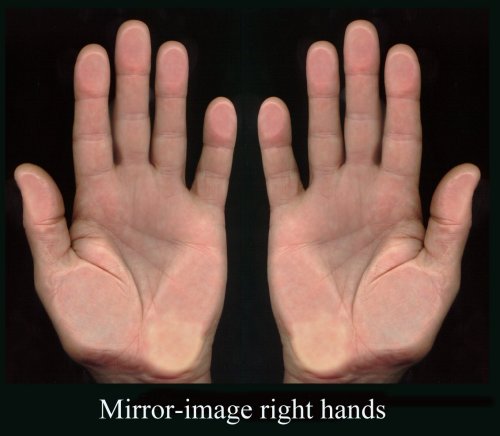Right Hand/Left Hand
Today, why do you write with your right hand? The University of Houston's College of Engineering presents this series about the machines that make our civilization run, and the people whose ingenuity created them.
That question isn't really fair, since many of you write with your left hand. But hardly any of us write worth a fig with our other hand. Frank Wilson's fine new book, The Hand, analyzes every conceivable aspect of the use of our hands - including handedness.
The human species is the only one that exhibits handedness, so we're well-advised to ask why. The explanation that's gained greatest acceptance says that handedness is related to throwing. Wilson analyzes throwing and shows what a complex process it is. If you don't believe that, just try throwing an object with your non-dominant arm. The synchronization of arm muscles and of the hand muscles that grip and release the ball is terribly complex.
Wilson argues that we had to evolve preprogrammed brains to do that. It isn't that our other arm can't throw; it's that we can't possibly think through all the movements while we're throwing.
Throwing is far from the only such hand action. The seemingly simple action of chipping a stone to make it into a tool required complex, coordinated hand action. Anthropologists have learned to tell whether right-handed or left-handed artisans chipped off a given stone flake. They find right-handedness going back well over a million years, all the way back to our Homo Erectus ancestors.
That might explain handedness, but why is the right-hand most often chosen? The most likely answer is William Calvin's Throwing Madonna theory. It goes like this: Our hearts pump blood out on the left. That's where the heartbeat is loudest, so an infant is happiest when its mother carries it on her left side. That means the active arm must be the right one. If the mother has to throw a stone at a lurking jackal, she has to do so with her right hand.
No asymmetric action is a simple matter of training one hand. As you throw with your right hand, you execute a balancing pattern with your left. Handedness patterns are shot through the whole body. Next time you write, watch your non-dominant hand. It'll stay surprisingly busy, repositioning the paper and otherwise helping out. And that brings us to the person whom you've met (or who you might even be) who writes right-handed and throws left-handed.
Such people are usually left-handers, taught as children to be right-handed. Unless they were also trained to throw right handed, they revert to normal behavior when they're handed a baseball.
Violinists, right and left-handed alike, bow with the right hand and finger with the left. Those asymmetrical tasks are quite unrelated to handedness and must be learned from scratch. They're not preprogrammed, since they're not needed for survival (except, perhaps, in Texas, where "There's gotta be fiddle in the band.")
So throwing carries over to some tasks: writing, playing tennis, using a fork. For tasks with no echoes of a primitive past, our hands are apparently blank slates to be patterned anyway we wish.
I'm John Lienhard, at the University of Houston, where we're interested in the way inventive minds work.
(Theme music)
Wilson, F.R., The Hand: How Its Use Shapes the Brain, Language, and Human Culture. New York: Pantheon Books, 1998. Chapter 8 "The Right Hand Knows What the Left Hand Just Did."
For more on the Throwing Madonna speculation by neurobiologist William Calvin, see http://www.uh.edu/engines/epi775.htm
I am grateful to Thomas R. DeGregori, UH Economics Dept., for drawing my attention to Wilson's book and lending me his copy of it.
